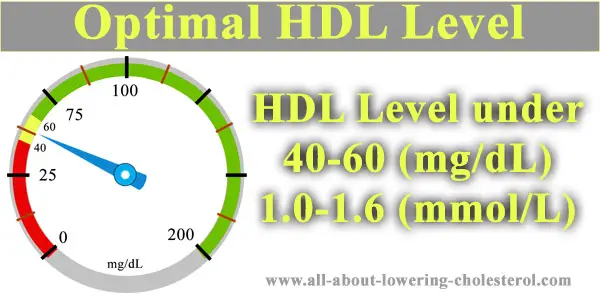
HDL cholesterol level 40-59 mg/dl is considered borderline cholesterol. This means that it is below the normal range, but not enough to be classified as low.
This can be due to a number of conditions, such as eating a poor diet, sedentary life, stressful life, genetics, having diabetes mellitus, smoking etc.
This level of HDL is associated with an average risk of developing not only cardiovascular events but even other complications.
What does having HDL cholesterol level 40-59 mg/dL mean?
HDL cholesterol level 40-59 mg/dl is considered borderline cholesterol. This means that it is below the normal range, but not enough to be classified as low.
First, please find following some important details about HDL cholesterol.
HDL cholesterol is also known under the name of “good” cholesterol. This means that it serves as a protective agent against the buildup of fats within the walls of the arteries. HDL cholesterol works by reusing, recycling, and reducing the levels of LDL or “bad” cholesterol by transporting it back to the liver where it is processed. This way the levels of LDL are kept within the optimal range.
Having cholesterol level 40-59 mg/dl means that the aforementioned mechanism does not work properly, that HLD cholesterol is failing at keeping LDL levels “under control” and, this can lead to the formation of atherosclerotic plaques in the walls of the blood vessels.
HDL cholesterol level 40-59 mg/dL – What are the levels of risk for cardiovascular problems??
People having HLD cholesterol levels 40-59mg/dl have an average risk of developing cardiovascular disease. This means that they have an average risk of developing atherosclerotic plaques in the walls of coronary arteries.
The buildup of these plaques can lead to a variety of conditions, starting from being completely asymptomatic to acute myocardial infarction and death.
It is very important to screen and treat HLD cholesterol levels 40-59 mg/dl in order to prevent cardiovascular events which can be even fatal.
HDL cholesterol level 40-59 mg/dL – The risk for any other health problems?
Having HDL cholesterol levels 40-59 mg/dl has also an average risk of developing atherosclerotic plaques not only in the walls of the coronary arteries but in every artery in the body.
This causes the insufficient perfusion of the region distal to the affected artery, by causing pain and in some cases, when the plaques cause significant obstruction the inner space of the artery, the death of the tissue distal to the obstruction can happen.
This is a very serious situation that gravely affects not only the life standard of the patient but can even compromise his life.
For example, if the buildup of the plaques takes place in one of the major arteries of the lower limbs, the patient can experience pain while walking, when resting, or even death of the tissues (gangrene) and, in this situations, the limb has to be amputated.
This is merely an example of what can happen if the levels of HLD cholesterol are not stabilized.
What Causes HDL cholesterol level 40-59 mg/dL?
The causes of HDL cholesterol levels 40-59 mg/dl are many. Please find following the most common causes:
1. Diabetes- Diabetes not only contributes in decreasing the levels of HDL cholesterol but also increases the level of LDL cholesterol
2. Smoking- Smoking is a well known HLD cholesterol-lowering agent
3. Sedentary life- Sedentary life is also a well-known cause of diminished HDL levels
4. Genetic- In some cases, low levels of HDL cholesterol can be inherited
5. Stress- Long term stress is known to lower HDL cholesterol levels
6. Poor diet- Some unhealthy foods such as trans fats, processed foods, and refined sugar can lower your HDL cholesterol levels.
